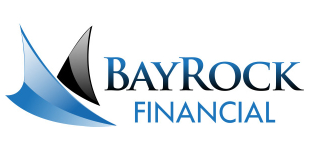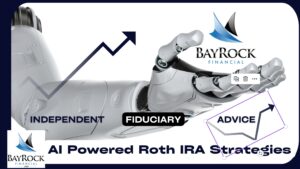Fund Your Roth IRA before Tax Day
-
Tax Day is Monday, April 18th
-
Choose from a wide variety of investment products
-
Refine your retirement strategy with innovative tools and calculators
-
Take advantage of potential tax benefits
IRA contribution limits
Learn about income and contribution limits for contributing to traditional and Roth IRAs.
2021 and 2022 traditional & Roth IRA contribution limits
Total annual contributions to your traditional and Roth IRAs combined cannot exceed:
2021: $6,000, 2022: $6,000 (under age 50)
2021: $7,000, 2022: $7,000 (age 50 or older)
Roth IRA vs Traditional IRA
Contributing To My Roth IRA Vs. My Traditional IRA
Should I Contribute To My Roth IRA Vs. My Traditional IRA?
When saving for retirement, clients will often ask which account they should be making contributions to – a traditional IRA or a Roth IRA? The answer depends on several different factors that should be considered and discussed.
To assist in this conversation, we have prepared the “Should I Contribute To My Roth IRA Versus My Traditional IRA?” flowchart. This flowchart considers:
-
Eligibility to deduct contributions to a traditional IRA
-
Eligibility to make contributions to a Roth IRA
-
Current tax rates vs. future tax rates
-
Ability to max out the contributions
-
RMD impact
Contributing To My Roth IRA
Can I Contribute To My Roth IRA?
A Roth IRA is a great option for clients looking to save after-tax dollars, offering the opportunity for tax-free growth and relaxed distribution rules. Unfortunately, eligibility to contribute to a Roth IRA is subject to restrictions, which can cause confusion.
To help make the analysis easier, we have created the “Can I Contribute To My Roth IRA” flowchart. It addresses the key eligibility considerations, including:
-
Earned income
-
Other (traditional) IRA contributions
-
Filing status-based MAGI thresholds
Download our Roth IRA Checklist
Roth IRA Deadline Notice
IR-2022-52, March 8, 2022
WASHINGTON — The Internal Revenue Service reminds taxpayers they may be able to claim a deduction on their 2021 tax return for contributions to their Individual Retirement Arrangement (IRA) made through April 18, 2022.
An IRA is a personal savings plan that lets employees and the self-employed set money aside for retirement and can have tax advantages. Contributions for 2021 can be made to a traditional or Roth IRA until the filing due date, April 18, but must be designated for 2021 to the financial institution.
Generally, eligible taxpayers can contribute up to $6,000 to an IRA for 2021. For those 50 years of age or older at the end of 2021, the limit is increased to $7,000. Qualified contributions to one or more traditional IRAs may be deductible up to the contribution limit or 100% of the taxpayer’s compensation, whichever is less. There is no longer a maximum age for making IRA contributions.
Those who make contributions to certain employer retirement plans, such as a 401k or 403(b), an IRA, or an Achieving a Better Life Experience (ABLE) account, may be able to claim the Saver’s Credit. Also known as the Retirement Savings Contributions Credit, the amount of the credit is generally based on the amount of contributions, the adjusted gross income and the taxpayer’s filing status. The lower the taxpayer’s income (or joint income, if applicable), the higher the amount of the tax credit. Dependents and full-time students are not eligible for the credit. For more information on annual contributions to an ABLE account, see Publication 907, Tax Highlights for Persons With Disabilities. PDF
While contributions to a Roth IRA are not tax deductible, qualified distributions are tax-free. Roth IRA contributions may be limited based on filing status and income. Contributions can also be made to a traditional and/or Roth IRA even if participating in an employer-sponsored retirement plan (including a SEP or SIMPLE IRA-based plan).
Taxpayers can find answers to questions, forms and instructions and easy-to-use tools at IRS.gov. This news release is part of a series called the Tax Time Guide, a resource to help taxpayers file an accurate tax return. Additional help is available in Publication 17, Your Federal Income Tax (For Individuals) PDF.
More resources
-
Do I Qualify for the Retirement Savings Contributions Credit?
-
Publication 590-A, Contributions to Individual Retirement Arrangements (IRAs)
Roth IRA
Contributions are not tax-deductible, but can provide tax-free income on withdrawals and earnings once you’re in retirement.
Traditional IRA
Contributions are typically tax-deductible and growth can be tax-deferred, but you’ll be taxed on money you take out in retirement.
Rollover IRA
Rolling over old 401ks to an IRA can make managing your retirement easier while still offering tax-deferred growth.
Setup Your BayRock IRA in 5 Minutes

5 Basic Steps to Open a Roth IRA
-
Make Sure You’re Eligible. You must have earned income for the year you want to contribute to a Roth IRA.
-
Decide Where to Open Your Roth IRA Account.
-
Fill Out the Paperwork.
-
Make Your Investment Choices.
-
Set Up Your Contribution Schedule.
Roth IRAs are one of the best ways to save for retirement. While there’s no upfront tax benefit, you get tax-free income in retirement—even on the earnings that have accumulated over the years.
There are also no RMDs (required minimum distributions) for Roth IRAs during your lifetime. That means you can let the money keep growing until you need it, or even leave tax-free income to your beneficiaries. See SECURE Act changes which passed in 2019.
The Roth IRA is especially beneficial for younger investors, who have decades for their money to compound before retirement. But there are no age limits for creating a Roth IRA.
2021 and 2022 traditional & Roth IRA contribution limits
Total annual contributions to your traditional and Roth IRAs combined cannot exceed:
-
2021: $6,000, 2022: $6,000 (under age 50)
-
2021: $7,000, 2022: $7,000 (age 50 or older)
I chose Charles Schwab for my Roth IRA Account. Almost all investment companies offer Roth IRA accounts. If you have an existing traditional IRA, the same company can probably open a Roth IRA for you. At BayRock Financial, we love Charles Schwab and its our first choice for clients, too. Here’s Why:
-
There’s no fee to open or maintain Your Roth IRA.
-
Schwab provides customer service online and by telephone.
-
Schwab offers the types of investments you’re looking for, whether that means:
-
ETFs,
-
target-date funds,
-
actively managed funds,
-
stocks,
-
bonds,
-
structured notes
-
and more
-
Schwab is what’s called a “custodian” because they take custody of your money. By using the online process outlined below, you’re setting up your Roth IRA with Charles Scwhab and you’re hiring BayRock as your Registered Investment Advisor.
Warning Stop Here Please Read
Please don’t proceed unless you’ve actually met with a CFP® Professional at BayRock before setting up your Roth IRA account. Here’s a link to Jim’s calendar if you want to book an appointment. BayRock builds and manages the investment portfolio so you don’t have to.
Complete the BayRock Process Online
Most banks and brokerages have a web page for Roth IRAs that you can visit to begin the process. You may be able to complete the entire application online, or you can speak to someone in customer service if you have questions.
Here’s What You Will Need:
-
A driver’s license or another form of photo identification.
-
Your Social Security number.
-
Your bank’s routing number and your checking or savings account number so that you can transfer money directly to your new account.
-
The name and address of your employer.
-
The name, address, and Social Security number of your plan beneficiary (the person who will get the money in the account if you die).
-
Naming one or more beneficiaries is very important. It allows the account to pass to someone else without having to go through probate. Remember to keep your beneficiary designation up to date, especially after events like marriage, divorce, or the death of a beneficiary.
Make Your Investment Choices
The financial firm will help you open the account, but you’ll need to decide how you want to invest the money that goes into your Roth. This can be the most difficult part of starting a Roth.
Set Up Your Contribution Schedule
If your bank allows you to, you can set up monthly transfers from your bank account to your Roth IRA. Alternatively, you can decide to make an annual contribution, as long as you still meet the income requirements.
You can contribute to your Roth IRA as late as the tax-filing date in the following year, typically April 15, however, in 2022 the tax deadline is April 18.
Remember, contributions to Roth IRAs are made with after-tax money, so there’s no tax advantage to waiting until the last minute to make your contribution. In fact, the sooner you contribute, the sooner that money will go to work for you.
We’ll be here every step of the way, so don’t hesitate to reach out by phone, text, or email if you need help!
Here’s a link to Jim’s calendar if you want to book an appointment.
Open Your Roth IRA in 5 Minutes
Six Simple Steps
-
Step One: Visit Charles Schwab’s Intellegent Portfolio Setup Page
It only takes about 5 Minutes to open your Roth IRA at Charles Schwab using these Six Simple Steps.

-
Step Two: Click the Start Button
Choose the Get Started button on the Schwab Intelligent Portfolio page as see in the attached image How to Open Your Roth IRA in 5 Minutes Step Two.

-
Step Three: Enter the BayRock Program Code
To Open Your Roth IRA with BayRock Financial, you’ll enter this Program Key: XZY1

-
Step Four: Provide Personal Information
Now you will be asked to answer a few key questions that will help us design the best portfolio for you based on your goals and your experience as an investor.

-
Step Five – Scroll down to select Roth IRA

-
Step Six: Create Account
If you’re already an investor at Charles Schwab, you will want to have your login credentials handy. If you’re new to Charles Schwab, you will enter your personal information so that your Roth IRA account will be established along with your new account number.

This was also posted to Missional Money. Subscribe to the Missional Money Podcast










